Illinois is in a State of Change
Table of Contents

Full episode
From a derecho sweeping across the Midwest, flattening homes and crops, to a thunderstorm dumping 10 inches of rain over hours in Ford County, Illinois is in a state of change. And scientists say these conditions are the result of human caused climate change, and it’s only getting started. Welcome State of Change, our new yearly look at how climate change is affecting Illinois.
Farmers are racing to protect livestock from rising heat, invasive Species are on the rise, a fossil fuel debate rages, and America’s national bird is back from the brink. Join Tinisha Spain the first episode of State of Change, a look at how Illinois’ environment is changing now and could change in the future.
Climate change present and future
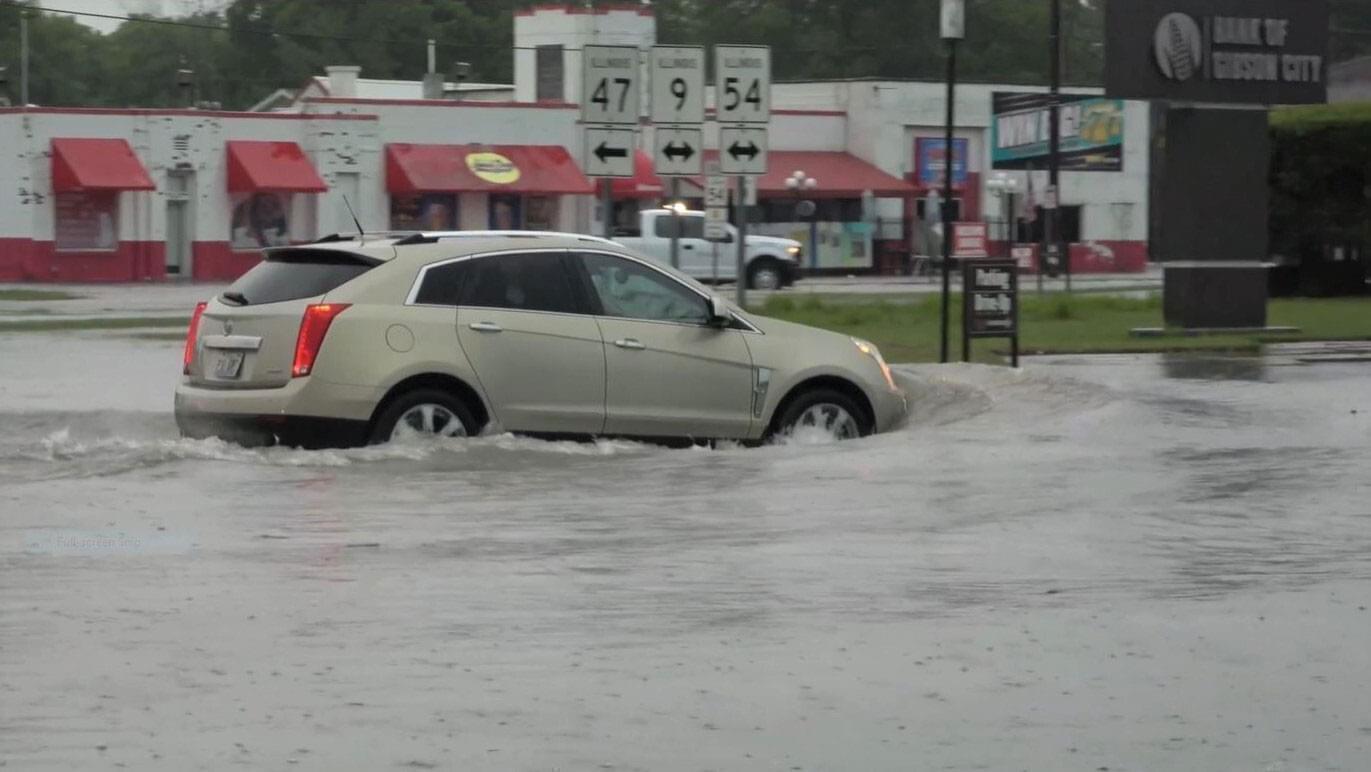
A derecho sweeping across the Midwest, flattening homes and crops… A thunderstorm dumping 10 inches of rain over hours in Ford County… Hundreds of thousands of invasive carp in the Illinois River. Scientists say these conditions are the result of human caused climate change and it’s only getting started.
A meteorologist and atmospheric scientist, who served as an expert on climate change during President Obama’s administration, explains why we may see an increase of severe storm events here in Illinois. We also review recent legislative changes designed to curb emissions in Illinois.
Fossil fuel debate in Pembroke Township
It has been more than 150 years since emancipated slaves settled in Hopkins Park located in Pembroke Township, Illinois. Those roots still run deep.
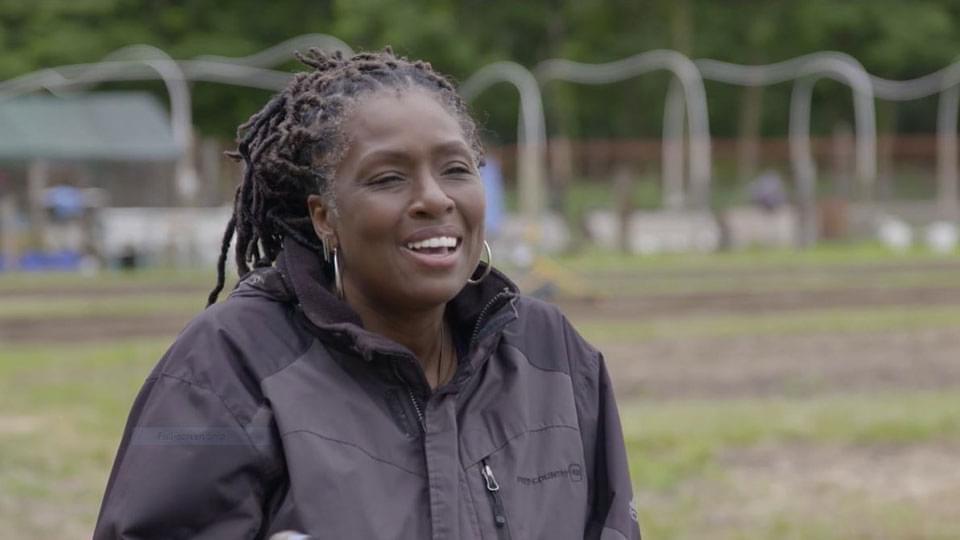
Pam Basu of Basu Natural Farms has five generations of family living in Pembroke. Her family moved from the south ahead of the Civil Rights Movement. Basu said her family came to Illinois for safety. She says, “We moved because my father wanted to get the children out of Mississippi because Emmett Till had gotten killed. We found land out here. My dad brought us here because this was the only place he knew where he could grow food and feed his family.”
A quick internet search will uncover a few more surprising facts about the community. Pembroke is one of the most unique environments in the world. It is one of the few places you can find inland sand dunes, a black oak tree savannah and several rare plant species. It is also a hub for black farming.
Recent headlines have been about the community’s energy problem as it works toward solving a decades old issue.
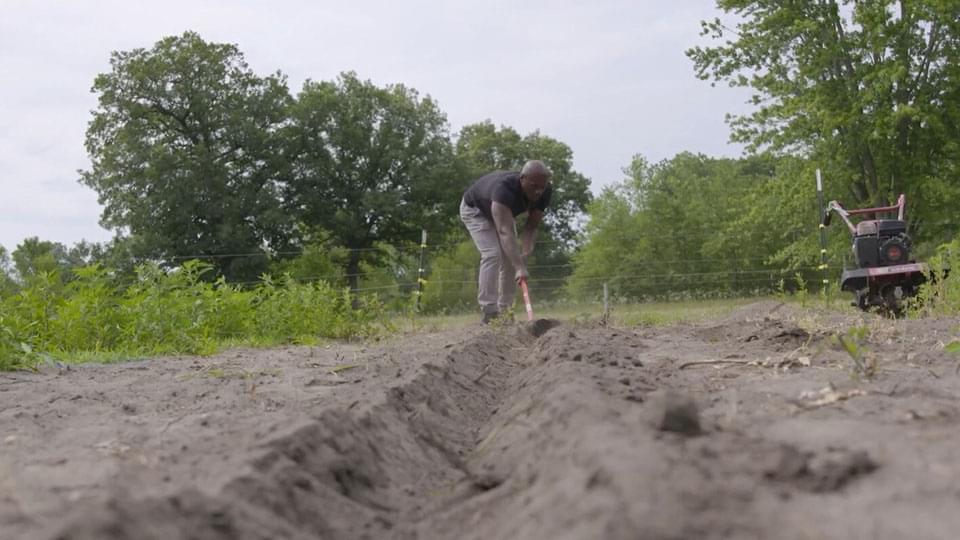
Pembroke township has never had natural gas, and house bill 3404 could soon change that. Nicor Gas wants to build the pipeline, and House Bill 3404 would provide grant money to those in the community who want to tie into the line. Currently, residents either have electric furnaces, or use propane, kerosene, and wood-burning stoves to heat their homes during the winter.
Mayor Mark Hodge leads Hopkins Park. It is a town within Pembroke Township. He is fighting for the pipeline project. He says it will spur development and help the area shake its reputation as a poor, impoverished community.
Johari Cole-Kwele is part of a small group of Black farmers who say they have major concerns about burying a natural gas pipeline among Pembroke’s unique biome. To her and those who agree with her, this is an opportunity to look ahead and demand green energy and equity among Illinois farmers.
Invasive species increase in Illinois
Illinois is known for its prairies and woodlands, but that landscape is under attack by 2 forces: climate change and invasive species. Invasives can change the environment around them so fast, the surrounding ecosystem struggles and sometimes fails to keep up.
Jim Lamer is the director of the Illinois River Biological Station and has studied the Illinois River for 20 years. The data he collected shows things are changing. Jim took us out on the river in Havana to get an up-close look at the heavy carp population first hand. He dropped a low voltage electric current in the water, and hundreds of fish flew into the air, some as high as 10 feet.

The silver, bighead, black, and grass carp are collectively known as Asian carp and they were brought to the US (United States) to help clean and filter retention ponds. They eventually spilled into the Mississippi, then made their way into the Illinois River.
Lamer says the carp populations here in Illinois are some of the most in the world, particularly in the stretch of the Illinois River that runs through Havana.
More carp puts a strain on resources and other fish in the food chain who eat plankton cannot thrive and that puts a dent in Illinois multi-million-dollar sport fishing industry. Lamer says there has been a marked decline in both the number and health of other native sportfish.
And the list of invasive plants is even longer.
Nicole Flowers-Kimmerle is an Illinois Extension educator near Peoria. She trains volunteers to go out and help control invasive spread in their communities, which also happens to be where the problem often begins. She adds, “A lot of the invasive plants we have were brought in by people for landscaping, or to prevent erosion or to make habitats for birds but now we’re finding that they are taking over our native diversity in our forests and wetlands.”
Wind, roots, and birds have always moved plants, spores, and seeds from place to place, but what is different now is the habitability of the unfamiliar environment. Scientists say annual precipitation in Illinois has increased by 5-6 inches since 1900. And our state is also warmer.
Zebra mussels made their way to Illinois via the Black and Caspian Sea by way of ships, and slow-moving barges. In the 90’s they were so dense they were fouling the taste of drinking water, and depleting resources for other aquatic life. Lamer says through education and mitigation efforts their numbers have declined throughout the state. They have now been absorbed into the ecosystem and can be found everywhere throughout the Great Lakes Region
When it comes to the carp, soon Illinois will unveil a new plan. If you can’t beat them, eat them. Taste testers report a delicious texture and flavor that will help put a dent in the carp population, but as Illinois continues to warm and our land and waterways provide a suitable new home for invasive species, they will be a permanent fixture in the prairie state.
Farmers sheltering livestock from higher heat
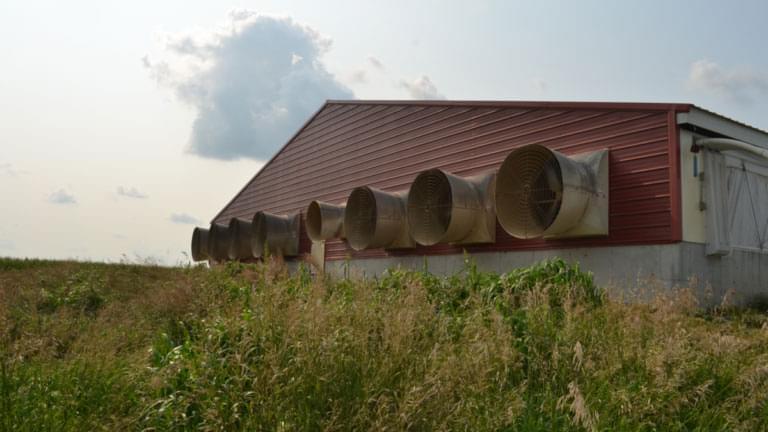
The air is humid and heavy with the smell of manure on Borgic Farms in Raymond, Illinois. Although the pigs aren’t panting yet, Phil Borgic, the farm’s owner, turns on eight massive cooling fans with six-foot blades designed to suck the hot air out of the long barn. If it gets hotter still, he says it’ll be time to turn on the sprinklers.
Not only is keeping animals cool essential for their comfort and safety, but it’s also important for their productivity. Borgic says pigs don’t eat when they’re too hot, so it takes longer for them to hit their target harvest weight.
The same goes for cows, says Mississippi State University professor Amanda Stone, whose research focuses on heat stress in dairy cattle. Signs of heat stress start to show up around 68 degrees Fahrenheit, she says. At that point, there are a range of effects, including reproductive issues and decreased milk production of up to 25%.
Stone says some adjustments are already happening. Through her work with the university’s extension office, she’s seen farms in Mississippi get creative in order to keep up with the heat. For example, one farm repurposed a center pivot irrigation system, typically used for irrigating crops, to cool down livestock.
On Borgic Farms in central Illinois, technology has played a key role in handling the relentless summer heat. In addition to the computer-controlled fans and sprinkler system, some of the pigs also live in cool cell facilities with honeycomb-like walls made out of treated cardboard. Water drips down through the honeycomb, and fans pull the wet air through the facility, reducing internal temperatures by up to 15 degrees Fahrenheit.
It’s a more effective way to cool off the sows, says Borgic, and it’s becoming increasingly common due to the hotter temperatures despite the cost of implementation.

Keeping animals cool is arguably more difficult for farmers who raise animals outside — like Wes Jarrell, who co-owns and operates Prairie Fruits Farm & Creamery in Champaign, Illinois. He and his wife keep more than 100 goats and use their milk to make cheese and gelato.
The farm is pasture-based, so the goats spend most of their time outside grazing on grass and shrubs. Like dogs, Jarrell says goats pant when they get too hot and take cover in the shade under trees. To protect his goats from heat stress, he is experimenting with silvopasture, which involves planting trees in livestock pastures.
But climate change-induced droughts and high heat days are making pasture-based systems more difficult to keep up with.
A couple of small barns on the farm also provide shade for the goats. But Jarrell says they’re making plans to build a bigger indoor facility, in part because it’s getting harder to keep the goats cool enough.
The price tag on that new barn — which will double as a creamery and office space — is nearly $700,000.
Climate experts predict that if we continue emitting greenhouse gases at the current rate, most of the summer in Illinois will consist of dangerous heat days, or days with a heat index above 110 degrees Fahrenheit. Click here to read the full story.
Raptors on the rebound
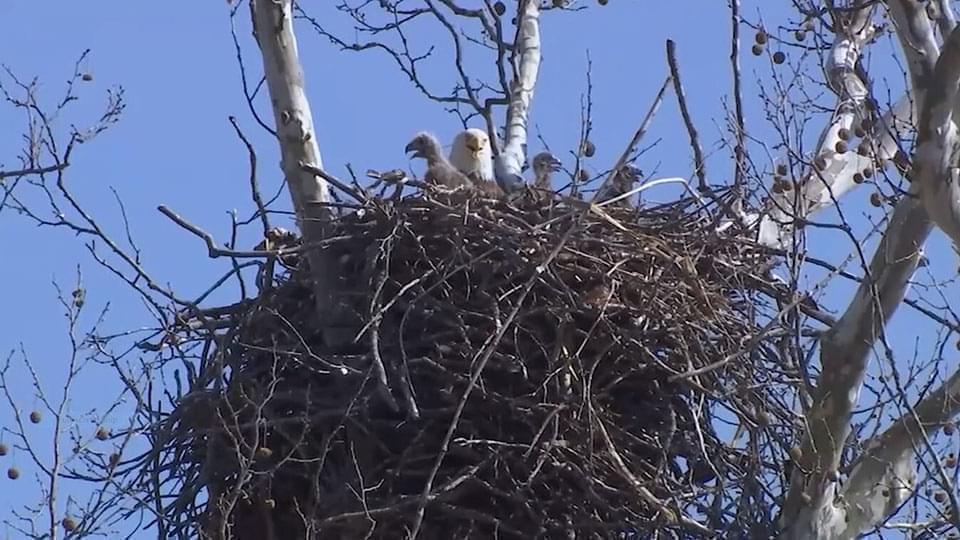
On a chilly morning in Vermilion County, it is time for breakfast for a family of Bald Eagles. Perched quietly in his director’s chair, Danville resident and nature enthusiast Wayne Haugen has spent thousands of hours photographing Bald Eagles. He has jokingly named this particular family of eagles The VanDyke's, a nod to Danville’s famous family. He has been lucky enough to capture intimate moments many do not get to see, like these huge birds bringing food back to their nest—that can weigh up to 1 ton.
University of Illinois associate professor Michael Ward has spent his life studying bird ecology and behavior. He remembers when America’s national symbol was almost killed off entirely because of a pesticide called DDT. For decades DDT was used by the ton in farming. Then in the 70’s, scientists discovered a high concentration of the DDT caused soft egg shells. When the birds would sit on the eggs to keep them warm, they would crack.
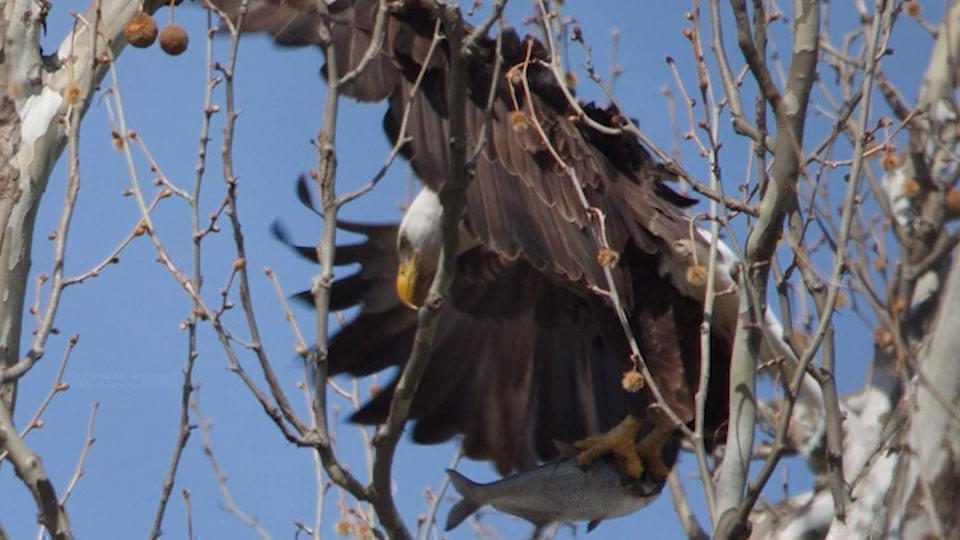
Susan Biggs Warner has worked in conservation for 37 years. At Forest Glenn Preserve in Georgetown, they have collected more than 50 years’ worth of bird sighting charts thanks to Vermilion County conservationist Marilyn Campbell. Each year since 1970, naturalists and bird enthusiasts jot down the birds they see in the park. For years, a bald eagle sighting was a rare occurrence. Then slowly, their numbers began to rebound.
American bald eagles remained on the endangered list until 2009 and now Illinois is second only to Alaska for most bald eagles in the country but that does not mean the threat is over.
Today it is, waterfront development, power lines, wind turbines and climate change that all become new threats to a species that has already been brought back from near extinction.
